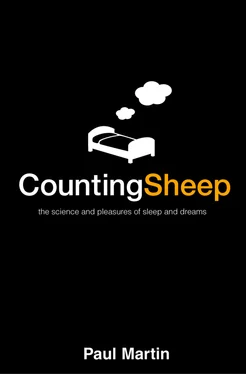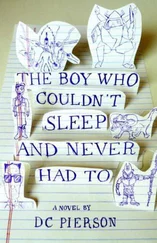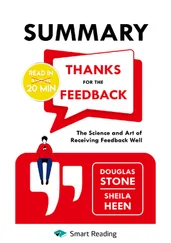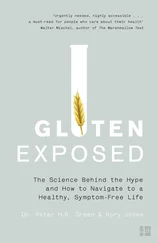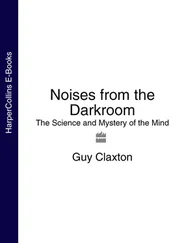In the next chapter we shall see that sleep-deprived people are bad at making decisions and communicating those decisions to others. Their judgment is impaired, they are easily distracted, they respond poorly to unexpected information, they lack flexibility, they persist with inappropriate solutions to problems and they are prone to taking foolish risks. These are not the characteristics any of us would wish to see in the people who make life-and-death decisions in the corridors of power, hospitals, flight decks or nuclear power stations.
You lack the season of all natures, sleep.
William Shakespeare, Macbeth (1606)
Does it really matter that many people in industrialised countries no longer get enough sleep of sufficient quality at the right times? We have seen one reason: the fact that sleepiness causes accidents. But far more than that, inadequate sleep matters because of what it does to our minds and our bodies each and every day.
Sleep is eloquent in its absence. We know that if we miss a night’s sleep we will feel bad the next day. But the unpleasant sensations of acute fatigue evaporate after a good night’s sleep and we soon forget. Far less obvious are the insidious, cumulative consequences of seldom getting quite enough sleep, night after night, week after week. Chronic sleep deprivation creeps up on us. It has pervasive effects on our mood, social skills and mental abilities – especially judgment, creative thinking and problem solving. It can also impair our physical health and make us more vulnerable to disease, as we shall see in the next chapter. However, the first and most obvious symptom of insufficient sleep is sleepiness, and that is where we shall start.
Life is one long process of getting tired.
Samuel Butler, Notebooks (1912)
The longer you go without sleep, the sleepier you feel. Objective measurements prove that there is indeed a close relationship between sleep deprivation and sleepiness. That relationship is ‘dose-dependent’, which means that the longer you have been deprived of sleep, the faster you will fall asleep when given the opportunity. Really tired people can fall asleep almost anywhere, as William Shakespeare observed:
Weariness
Can snore upon the flint, when resty sloth
Finds the down pillow hard.
If you are able to lie on a hard floor and go to sleep immediately during the middle of the day, you are probably sleep-deprived. (An obvious point, but no less true for that.)
Sleep will eventually force itself upon you if you go long enough without it. When scientists carry out sleep-deprivation experiments with human volunteers they often have to work quite hard to keep their subjects awake. Someone who has been deprived of sleep for two or three days requires stimulation, activity and variety to stop them falling asleep, no matter how well motivated they are to stay awake. Ian Oswald, a British scientist who conducted sleep-deprivation experiments in the 1960s, recalled walking the streets of Edinburgh flanked by exhausted volunteers whom he was working hard to keep awake. Even then, he would often see their eyelids closing as they walked along in a twilight state somewhere between waking and sleep.
Sleepiness and its flip side wakefulness determine how alive you feel and how well you perform every day of your life. But until the late 1970s there was no standard tool for measuring sleepiness. Then Mary Carskadon of Brown University in the USA invented a simple technique called the multiple sleep latency test (MSLT). It measures sleepiness like this. The subject is invited to go into a dark, quiet room in a sleep laboratory, to relax and fall asleep. Sensors detect the physiological signs of sleep (of which more later). As soon as the subject falls asleep, he or she is woken up. The key measurement is the time taken to fall asleep. The purpose of the MSLT is to measure daytime sleepiness, so the tests are generally carried out between ten in the morning and eight in the evening. The procedure is usually repeated four or five times during the course of a day.
The length of time between lying down and falling asleep is called the sleep latency. A daytime sleep latency of 15–25 minutes is generally interpreted as a reassuring sign of normality. Someone who is sleep-deprived will fall asleep faster. A sleep latency of less than ten minutes raises questions; there is a good chance that the person concerned will be experiencing intrusive daytime sleepiness, especially during the normal afternoon dip in wakefulness or when bored. A daytime sleep latency of less than five minutes usually signifies excessive tiredness, implying that the individual is substantially sleep-deprived or suffering from a sleep disorder.
Not everyone who falls asleep quickly in the MSLT is sleep-deprived, however. There are a few healthy people who can fall asleep in a trice, given the opportunity and the will. These individuals have the ability to go out like a light even after they have had unlimited amounts of sleep and without displaying any other signs of sleep deprivation. They just seem to be unusually good at relaxing and going to sleep during the day, regardless of their need for sleep. An unusually short sleep latency should therefore be viewed as strong evidence of sleep deprivation, but not conclusive proof.
The MSLT is conducted in a sleep laboratory, using electronic sensors to determine the onset of sleep objectively. There is, however, a crude, do-it-yourself version of the MSLT. This entails lying on a bed under sleep-friendly conditions – lights off, shoes off, TV off, no noises off, and so on – with one hand dangling over the edge of the bed and holding a metal object such as a spoon. Under the dangling hand rests a plate or some other hard surface. When you fall asleep your muscles relax and the spoon drops onto the plate with a loud clatter. All being well, you should then wake up, check your stopwatch and write down your sleep latency. If, on the other hand, you wake up several hours later to find your spoon lying on the plate, it may be that you are sleep-deprived. An even simpler way of assessing your own subjective sense of sleepiness is with a self-rating method called the Stanford Sleepiness Scale. This is a seven-point scale, ranging from 1 (defined as feeling active, vital, alert, wide awake), through 2 (functioning at a high level, not at peak), 3 (relaxed, not full alertness, responsive), 4 (a little foggy, not at peak, let down), 5 (tired, losing interest, slowed down), and 6 (drowsy, prefer to be lying down), to 7 (almost in a reverie, hard to stay awake).
Sleepiness is affected by many other factors besides the length of time since you last slept. Foremost among these is the time of day. Other things being equal, it is easier to fall asleep at certain times of the day and harder at other times. Wakefulness fluctuates naturally over the 24-hour cycle, with low points occurring in the early hours of the morning and again in the afternoon. This daily rhythm in wakefulness is mirrored by fluctuations in performance, which manifest themselves in many ways. For instance, you are more likely to crash your car or make a mistake when performing a difficult task in the early hours of the morning or in the afternoon. Sleep deprivation amplifies the effects of time of day, so the more sleep-deprived someone becomes, the deeper their daily troughs in wakefulness.
Stimulation and activity can mask sleepiness, at least for a while. Busy people often fail to notice how tired they really are until they relax at the weekend or on holiday. Their true state then becomes apparent. Sleepiness is even influenced to some extent by the nature of your previous activity. Experiments have confirmed, for example, that people feel sleepier and fall asleep more quickly after watching television than after taking a walk.
Читать дальше
